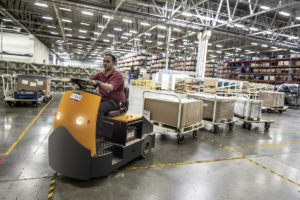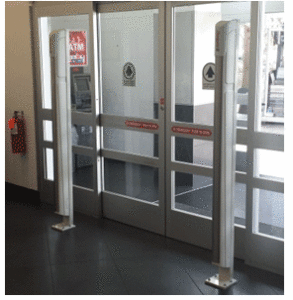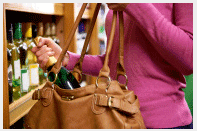 Some of the most stolen items in stores in the United States are not surprising. From Infant formula to razors, people are stealing these items to sell them for quick cash or because they are shoplifters that are dedicated to doing this crime. Valentine’s Day is approaching, and some of the items that seem to be gifted during this day are among the most commonly stolen items in the United States. A shoplifter will steal any time of the year, whether the opportunity presents itself or not, or whether it’s a holiday or a weekday. As a store manager or employee of a store, greeting and treating a customer politely can gain you a customer, and deter a shoplifter from stealing from your store. Customer service has been proven time and again to be a great deterrent to shoplifters, and cannot hurt to be polite and competent with your regular customers.
Some of the most stolen items in stores in the United States are not surprising. From Infant formula to razors, people are stealing these items to sell them for quick cash or because they are shoplifters that are dedicated to doing this crime. Valentine’s Day is approaching, and some of the items that seem to be gifted during this day are among the most commonly stolen items in the United States. A shoplifter will steal any time of the year, whether the opportunity presents itself or not, or whether it’s a holiday or a weekday. As a store manager or employee of a store, greeting and treating a customer politely can gain you a customer, and deter a shoplifter from stealing from your store. Customer service has been proven time and again to be a great deterrent to shoplifters, and cannot hurt to be polite and competent with your regular customers.
Here are the ten most commonly stolen items in the United States:
1. Alcohol – It is not surprising that alcohol is one of the most sought items to steal.
2. Makeup– small items that are accessible on the shelves and that can be concealed with very little work, makeup is one of the hot items to steal every day of the year, not only during the holidays
3. Fashion accessories -including creams, sunglasses, belts, and scarfs can easily be concealed and carried away between jackets or other loose fitting clothing
4. Mobile Accessories– From chargers to cases and everything you need for your smartphones and Ipads are some of the items many shoplifters can steal and that are easily sold elsewhere for a profit.
5. Beauty and Hygiene items but especially razors are one of the top items shoplifters seem to prefer to steal.
6. Lingerie – February 14th. is just two weeks away, and believe it or not lingerie seems to be very popular to give and receive during this sweet holiday. If you are a retail store and sell Valentine’s day items, prepare your employees for the shoplifting that may occur.
7. Meat – Red meat is not good for our health, but apparently shoplifters like to steal meat from supermarkets and is one of the most commonly stolen items today
8. Baby Formula– One of the most stolen items today is baby formula. Shoplifting baby formula and then selling for a profit seems to be the way shoplifters prefer to do this and stores across the country seem to be feeling the pinch
9. Chocolate – For Valentine’s Day, chocolate is a favorite for many people. Keeping a lookout for this item can probably reduce your losses a bit this February and throughout the year.
10. Over the counter drugs– With the price tags of some of these over the counter medications, it is not surprising many people are choosing to steal them instead.
 I actually like and believe in all three of these things. When it comes to drugs they have to be the legal kind. All of us have seen the destruction that illegally used drugs cause. In a business environment, illegal drug use by an employee not only has an impact on their work performance but creates serious customer and legal issues for employers. An employee that is under the influence of any substance that influences their ability to do their job correctly or safely, will cause customers to question who they are doing business with.
I actually like and believe in all three of these things. When it comes to drugs they have to be the legal kind. All of us have seen the destruction that illegally used drugs cause. In a business environment, illegal drug use by an employee not only has an impact on their work performance but creates serious customer and legal issues for employers. An employee that is under the influence of any substance that influences their ability to do their job correctly or safely, will cause customers to question who they are doing business with.

 After the holidays, you probably have a whole array of chores you must do to decide whether you had a good or bad year. The holidays are behind us, and if you seem eager to have new strategies to put in place, it is not uncommon, and you are not alone. New year resolutions are abundant during this time of year, and even though many of them are related to exercise, eating and health issues, yours can be directed completely to the business side of your life.
After the holidays, you probably have a whole array of chores you must do to decide whether you had a good or bad year. The holidays are behind us, and if you seem eager to have new strategies to put in place, it is not uncommon, and you are not alone. New year resolutions are abundant during this time of year, and even though many of them are related to exercise, eating and health issues, yours can be directed completely to the business side of your life. With darker daylight hours comes the need for more coffee, the use of lights earlier and a plan to keep crime away from your store or business. Have you considered that one of the following types of crime could affect you?
With darker daylight hours comes the need for more coffee, the use of lights earlier and a plan to keep crime away from your store or business. Have you considered that one of the following types of crime could affect you?
 Accidents can be costly to businesses. In fact, according to the
Accidents can be costly to businesses. In fact, according to the Big corporations across the globe worry about cybersecurity attacks and the repercussions those attacks have on the corporation’s bottom line. These cybersecurity attacks to their servers and information databases can be costly and can bring with them costly lawsuits as well. But, according to many analysts, employee theft and shoplifting are the more concerning issues affecting the retail industry. They alone account for more than two-thirds of their shrinkage and that figure seems to be rising every year. During the holiday season, those issues become more problematic and costly, and the retail industry looks for ways to prevent the great loses they will certainly suffer during this jolly time.
Big corporations across the globe worry about cybersecurity attacks and the repercussions those attacks have on the corporation’s bottom line. These cybersecurity attacks to their servers and information databases can be costly and can bring with them costly lawsuits as well. But, according to many analysts, employee theft and shoplifting are the more concerning issues affecting the retail industry. They alone account for more than two-thirds of their shrinkage and that figure seems to be rising every year. During the holiday season, those issues become more problematic and costly, and the retail industry looks for ways to prevent the great loses they will certainly suffer during this jolly time. For many big retailers and the small mom and pop shop, the holidays are something to be excited about.
For many big retailers and the small mom and pop shop, the holidays are something to be excited about. Could it be that Santa Claus is not always a jolly, giving man? Oh yeah. Take a
Could it be that Santa Claus is not always a jolly, giving man? Oh yeah. Take a 